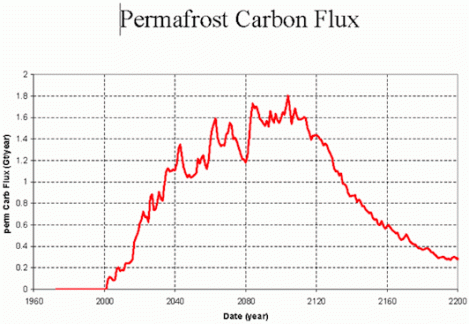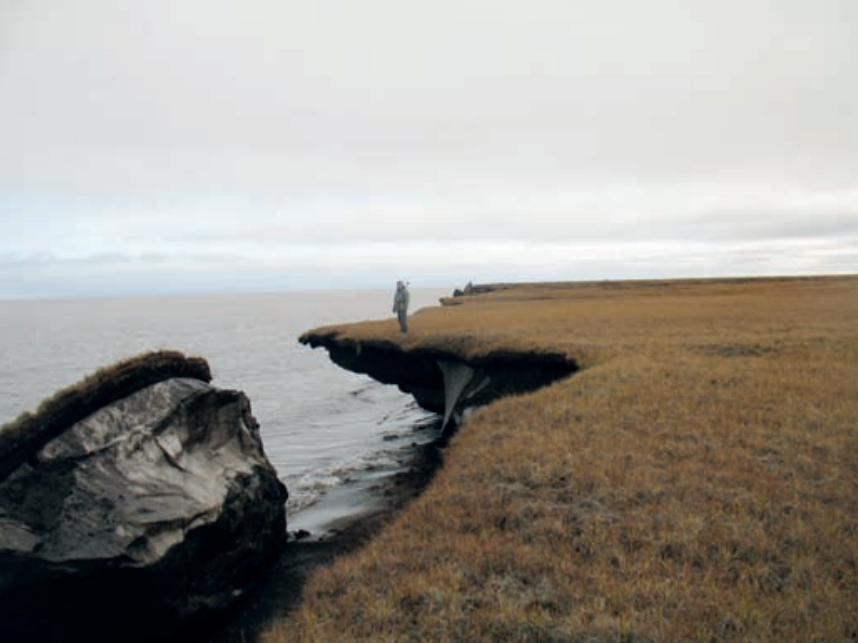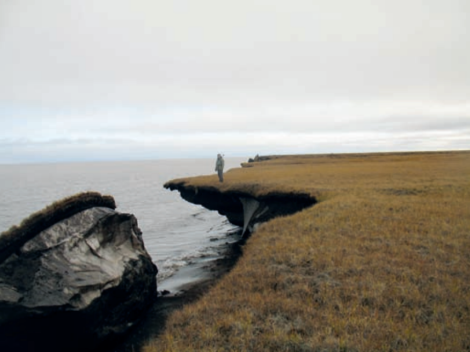Climate Progress blogger Joe Romm is one of the best there is at breaking down climate science, which is to say that he is one of the best there is at dropping reams of data in your lap that he can demonstrate add up to the apocalypse. Yesterday, when you weren’t looking, he dropped a ton of data in your lap in a post whose title ends in an exclamation point. So, you know. It’s serious.
For a long time, climate scientists have been concerned about the effects of melting permafrost. By way of quick refresher, permafrost is the layer of frozen ground that is a hallmark of the Arctic. Since the region is usually below freezing, the soil stays frozen to varying depth, which has been a boon for development. Rock-solid soil makes it simple to build towns and roads. Until the permafrost starts to melt — which it is — causing some serious problems for those towns and roads.
That’s actually the least troubling problem. Of far more concern is methane release. As layers of soil and vegetation that have been frozen solid for centuries thaw, they start to release methane that’s been trapped. And, worse, that vegetation starts to decompose, releasing newly created methane. Methane, as we’ve noted, is far more effective at trapping heat in the atmosphere than carbon dioxide, creating a massive negative loop of warming and permafrost thaw and more warming and so on.
What’s the U.N. going to do about the problem? Nothing. As Romm notes, a key U.N. report won’t even acknowledge it exists.
The U.N. Intergovernmental Panel on Climate Change is due to release its “Fifth Assessment Report” in stages beginning next fall. It’s meant to be an overview of the science on climate change to guide the global body. But it “will not include the potential effects of the permafrost carbon feedback on global climate,” per a new report that details the permafrost problem. Therefore: Romm went ballistic. With graphs and reports, as is his fashion.
Back in 2005, before the IPCC’s Fourth Assessment, a major study (subs. req’d) led by NCAR climate researcher David Lawrence, found that virtually the entire top 11 feet of permafrost around the globe could disappear by the end of this century. Using the first “fully interactive climate system model” applied to study permafrost, the researchers found that if we tried to stabilize CO2 concentrations in the air at 550 ppm, permafrost would plummet from over 4 million square miles today to 1.5 million.
That matters because the … permamelt contains a staggering 1.5 trillion tons of frozen carbon, about twice as much carbon as contained in the atmosphere, much of which would be released as methane. Methane is 25 times as potent a heat-trapping gas as CO2 over a 100 year time horizon, but 72 to 100 times as potent over 20 years!

ThinkProgress/Schaefer et alCarbon expected to be released into the atmosphere from thawing permafrost.
Translation: The U.N. IPCC’s report won’t take into consideration perhaps the single most important contributor to warming besides consumption of fossil fuels. Meaning that its models over the course of decades and centuries will be wrong. And meaning, therefore, that the undoubtedly grim predictions it outlines will actually be hopelessly optimistic.
Which is worth a few exclamation points.




